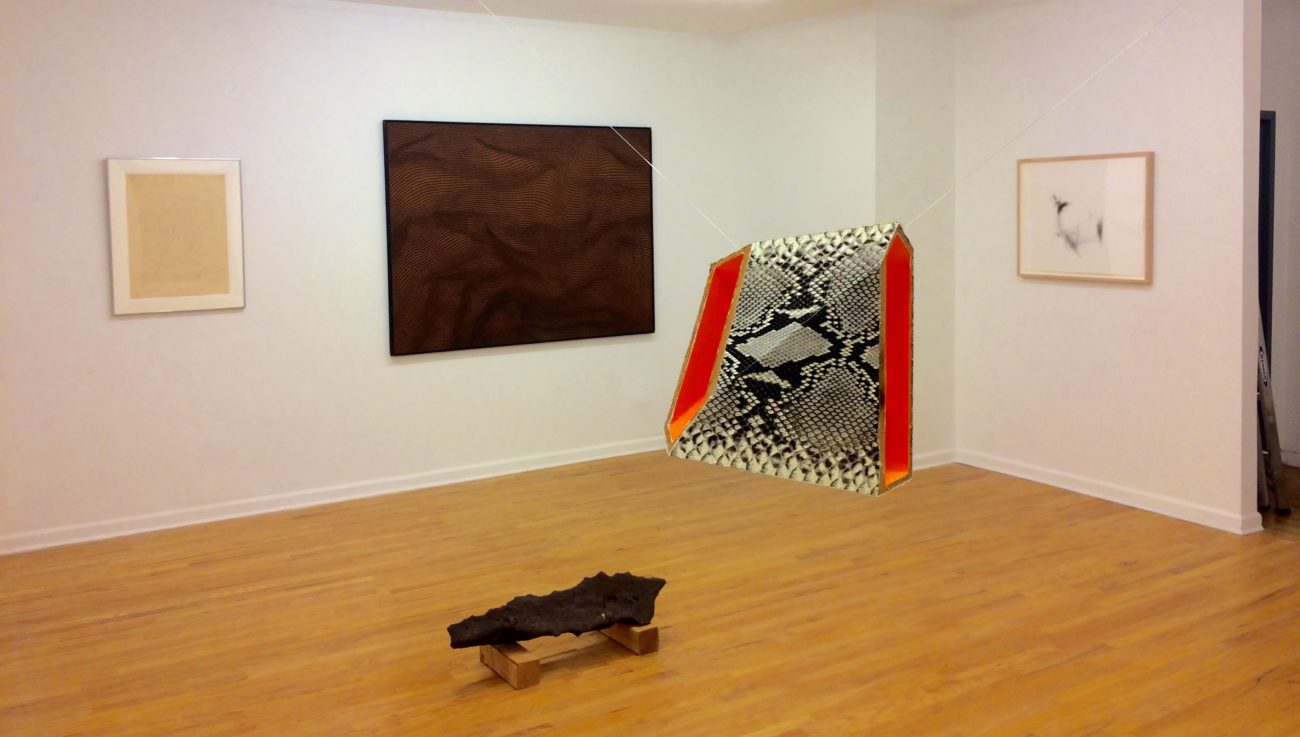ART WORLD NEWS
‘The Gallery May Be Unable to Continue’ -ARTnews
[ad_1]
Installation view of “Masterpieces” at Mitchell Algus Gallery with work by George Ortman, Henry Pearson, Morgan O’Hara, Bill Bollinger, and Steve Keister.
COURTESY MITCHELL ALGUS GALLERY
This morning, the proudly idiosyncratic, relentlessly iconoclastic New York art dealer Mitchell Algus posted a startling message on Instagram: “The Mitchell Algus Gallery is on the verge of closing. After nearly 27 years of exhibitions and with a lease pending renewal, the gallery may be unable to continue.”
That would be a tremendous loss for the Manhattan art industry, and the art world as a whole. Since 1992, Algus has been a dependable purveyor of work by outré and obscure artists, from Harold Stevenson, who christened one of the dealer’s spaces with a 39-foot-long nude painting, to Bill Bollinger, a lesser-known Post-Minimalist whose work has since achieved posthumous renown.
As a handful of international mega-galleries with thousands and thousands of square feet of exhibition space around the world have hoovered up artists at a rapid pace in recent years, becoming one-stop emporiums for collectors wanting to acquire the same depressingly predictable examples of blue-chip art, Algus has operated as a potent example of another kind of dealing: an art obsessive with strong in opinions in a room with white walls, a telephone, and a semi-functional website, showing whatever he pleases.
And much of what he has chosen to show has been thrilling, bizarre, maddening art that, for sundry reasons, had simply been ignored or set aside by the time he came along. One example: the gloriously pornographic “Fuck Paintings” that Betty Tompkins began making near the end of the 1960s, which Algus was instrumental in bringing to a wider audience.
“He was like a fairy godmother for us,” Tompkins told me in 2012, speaking of all the artists who were the focus of Algus’s efforts, a wide-ranging cast that includes Rosalyn Drexler, Nicholas Krushenick, Lee Lozano, and many, many others.
At the time I spoke with the artist, I was profiling Algus and his then-business partner Amy Greenspon, and he was still teaching high school science. That day job afforded him a certain freedom in operating his business, never having to be overly concerned about sales. (Tompkins told me that she recalled once hearing him on the phone with a collector, turning down what he viewed as a bad deal by saying, “I teach school so I can have the privilege of saying no to things like this.”)
When Algus retired from the public school system in 2014, his aim was for the gallery simply to break even, which seemed doable, since he has a pension and his expenses are minimal: he doesn’t do art fairs, he has no staff, he doesn’t list works on digital marketplaces. But the numbers—which is to say, sales—have not been panning out. That’s disappointing since he has had a Hall of Fame–level batting average in terms of being able to spot overlooked (and thus undervalued) talent, whose reputations (and prices) would soon rise.
Over the years, some artists Algus championed have moved on to larger dealers, which Algus has said he’s happy about (he never wanted to represent people), but he had no illusions about the unsavory ways that money can work in this business. “A painting that is a million dollars is a lot more sexy than a painting that is $18,000,” he told me back in 2012. “It’s very frustrating. You realize that is the way the art world is.”
Without naming names, the amount of money spent by some collectors at one of the mega-galleries for a single trophy artwork could buy a boatload of venturesome art from Algus’s gallery, supporting an enterprise that has been instrumental in making this city, its art scene, and its art historical narratives a great deal more thrilling. (And it’s worth noting that other independently minded art dealers are having a tough time in this environment, but Algus is choosing to be uniquely vocal.)
In any case, Algus’s focus has always been on the next show, the next intriguing nugget he could dig up, as opposed to business considerations. “I really dislike consensus,” he told me, adding that “if things can undermine consensus, that’s sort of what I’m interested in.”
Undermining consensus is certainly what Algus is up to in his current show, which he’s strikingly titled “Masterpieces” and stocked with just a few greatest hits from his gallery’s rich history. There’s a searing 1973 painting of a nude woman by Juanita McNeely, blood pouring from her nose and vagina; a tender, vaguely surreal 1972 seascape by Leonid Berman; and wild abstract hanging sculpture by Steve Keister. These are by no means household names, but they should be—and, one suspects, if they receive the right support, they very well could be.
“Masterpieces” runs through August 2, and then it will be on view by appointment for the rest of the month. After that, it’s not clear what will happen, but I am certain I do not want to live in a New York without the Mitchell Algus Gallery.
[ad_2]
Source link











